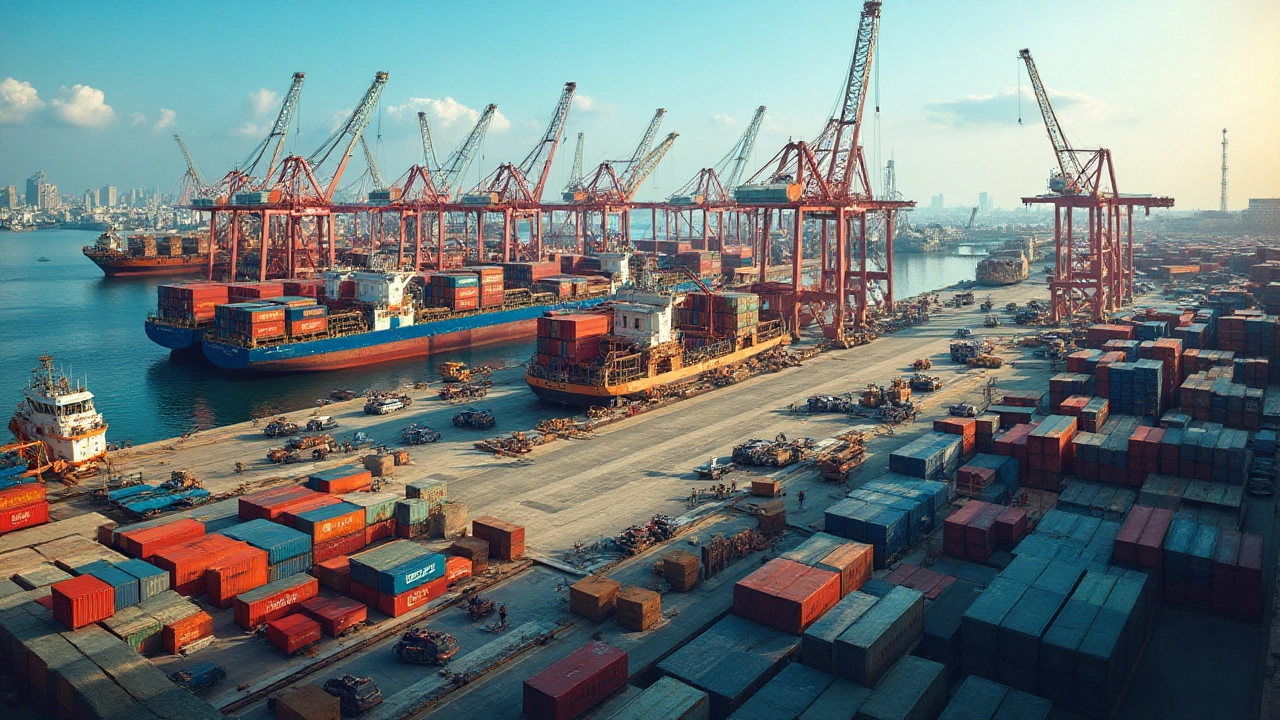UPS vs USPS: Cheapest Way to Ship Heavy Boxes Compared
Wonder if UPS or USPS is cheaper for shipping heavy boxes? Get detailed comparisons, real numbers, and random tips to save more on big shipments.
If you’ve ever felt lost staring at a list of carrier options, you’re not alone. Whether you’re sending a bike across town or a heavy box overseas, the right choice can save you time and cash. In this guide we’ll break down the most common services, point out hidden fees, and give you tools to decide in minutes—not hours.
UPS and USPS dominate the domestic market, but they aren’t twins. UPS tends to charge more for fast, door‑to‑door service, while USPS often wins on price for heavier parcels that don’t need next‑day speed. For example, a 30‑lb box shipped with UPS Ground might cost about $45, whereas USPS Retail Ground could be under $30. The trade‑off is tracking detail and pickup flexibility—UPS lets you schedule a pickup, USPS usually requires a drop‑off at the post office.
When it comes to overnight shipping, the names get confusing. UPS Next Day Air and UPS Overnight are similar but differ in delivery windows and pricing tiers. FedEx offers an equivalent FedEx Overnight, and DHL focuses on international express. If you need a package on the same day, look for services labeled ‘Same Day’ or ‘Next Flight Out.’ These are pricey, but they guarantee the fastest route.
First, measure and weigh accurately. Carriers charge by dimension weight if the package is large but light, so a box full of bubble wrap can cost more than the actual weight suggests. Pack tightly, use the smallest box that fits, and remove excess filler.
Second, consider insurance wisely. USPS includes $100 of insurance at no extra cost, which is enough for most small items. For high‑value bikes or electronics, purchase additional coverage or use a carrier that offers third‑party insurance. Filing a claim is easier when you keep receipts and photos of the item before shipping.
Third, plan for the last‑mile. This is the final stretch from the carrier’s hub to the customer’s door and often adds the most surprise fees—like residential delivery surcharges or specific delivery time windows. If you can arrange a nearby pick‑up point or have the receiver collect from a local depot, you’ll cut those extra costs.
International shipping adds another layer. Sea freight remains the cheapest for bulky items, but it can take weeks. Air freight is faster but pricier; many businesses use a hybrid approach—air for urgent parts, sea for bulk stock. Check the destination country’s customs rules; some require a commercial invoice or specific packaging, and failing to comply can delay your shipment and add fines.Finally, use online rate calculators. All major carriers let you plug in weight, dimensions, and zip codes to get an instant quote. Compare three options side by side before you book. Many third‑party platforms also aggregate rates and can offer discounts that aren’t public on the carrier’s own site.
By keeping these points in mind—accurate measurements, smart insurance choices, last‑mile planning, and a quick rate check—you’ll turn a confusing shipping decision into a straightforward process. The right carrier is out there; you just need a clear checklist to find it.

Wonder if UPS or USPS is cheaper for shipping heavy boxes? Get detailed comparisons, real numbers, and random tips to save more on big shipments.

Many people wonder whether UPS Next Day Air and overnight shipping are the same. While they are often used interchangeably, there are distinct differences. This article clarifies these differences and highlights the nuances of each option. Knowing these can help you choose the best service for your delivery needs.

In the realm of global trade, international shipping plays a crucial role. With today’s decentralized production and global marketplaces, it's essential to identify the most popular and efficient shipping methods available. This article explores the leading options, from traditional sea freight to modern advancements in air and rail shipping. It also offers insights into cost-effective practices and tips for choosing the right method for various needs.

Discover what the USPS $100 insurance included means and how it helps protect your packages during transit. This article explores essential details about coverage, claims processes, and tips on ensuring your items are safeguarded. Learn how USPS insurance can provide peace of mind and why it's a valuable addition for both senders and recipients. Dive into practical insights to maximize the security of your shipments with USPS.

Choosing the best carrier for overnight shipping requires understanding the range of services each company offers. With top options like FedEx, UPS, and DHL, businesses and individuals can find solutions that match their urgency and budget. Each carrier has unique features like flexible pick-up times and reliable tracking. Exploring these choices helps ensure parcels reach their destinations promptly and securely.

The rising costs associated with last mile delivery have become a substantial challenge for businesses across various industries. This article explores the factors that contribute to these costs, from consumer expectations to urban congestion. It provides insights into the complexities of the last mile, offering strategies for improving efficiency and reducing expenses. Technologies and innovative solutions are discussed to help mitigate the financial burden on companies.